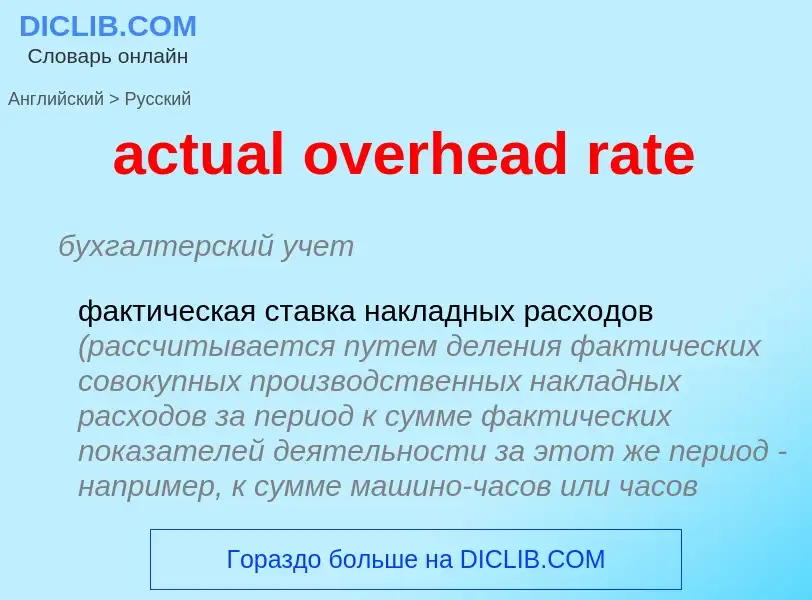Tradução e análise de palavras por inteligência artificial ChatGPT
Nesta página você pode obter uma análise detalhada de uma palavra ou frase, produzida usando a melhor tecnologia de inteligência artificial até o momento:
- como a palavra é usada
- frequência de uso
- é usado com mais frequência na fala oral ou escrita
- opções de tradução de palavras
- exemplos de uso (várias frases com tradução)
- etimologia
actual overhead rate - tradução para Inglês
бухгалтерский учет
фактическая ставка накладных расходов (рассчитывается путем деления фактических совокупных производственных накладных расходов за период к сумме фактических показателей деятельности за этот же период - например, к сумме машино-часов или часов прямого труда; служит для распределения накладных расходов при расчете фактической себестоимости)
синоним
Смотрите также
бухгалтерский учет
накладные расходы [затраты] [издержки] (любые затраты, которые невозможно непосредственно отнести на себестоимость определенной продукции (обычно это все затраты, кроме прямых затрат труда и материалов), напр., затраты на аренду помещений, электроэнергию, канцелярские товары и другие расходы на хозяйственное обслуживание производства и управления; подразделяются на производственные накладные расходы, административные накладные расходы, накладные расходы по сбыту, накладные расходы на исследования и разработки)
косвенные затраты (в межотраслевом балансе: затраты, которые входят в данный продукт через затраты сопряженных отраслей)
синоним
Definição
Wikipédia
A pre-determined overhead rate is the rate used to apply manufacturing overhead to work-in-process inventory. The pre-determined overhead rate is calculated before the period begins. The first step is to estimate the amount of the activity base that will be required to support operations in the upcoming period. The second step is to estimate the total manufacturing cost at that level of activity. The third step is to compute the predetermined overhead rate by dividing the estimated total manufacturing overhead costs by the estimated total amount of cost driver or activity base. Common activity bases used in the calculation include direct labor costs, direct labor hours, or machine hours.
This is related to an activity rate which is a similar calculation used in Activity-based costing. A pre-determined overhead rate is normally the term when using a single, plant-wide base to calculate and apply overhead. Overhead is then applied by multiplying the pre-determined overhead rate by the actual driver units. Any difference between applied overhead and the amount of overhead actually incurred is called over- or under-applied overhead.


